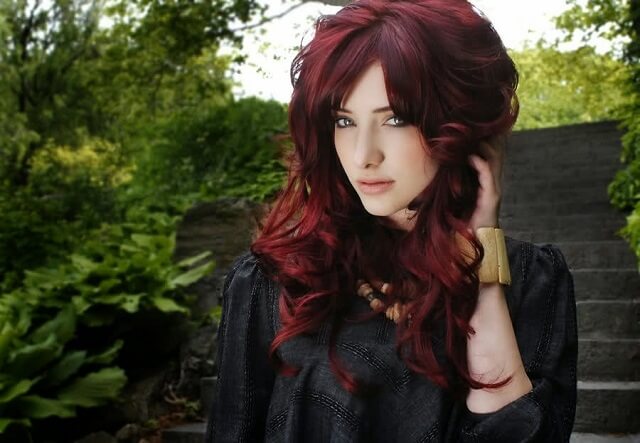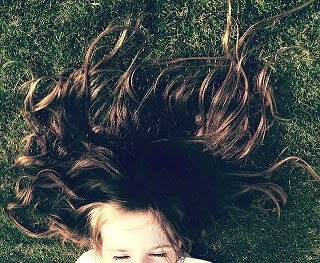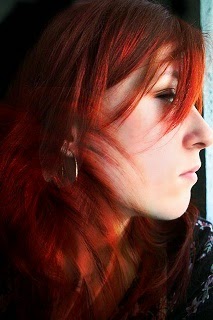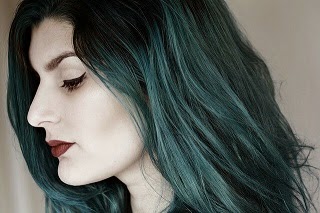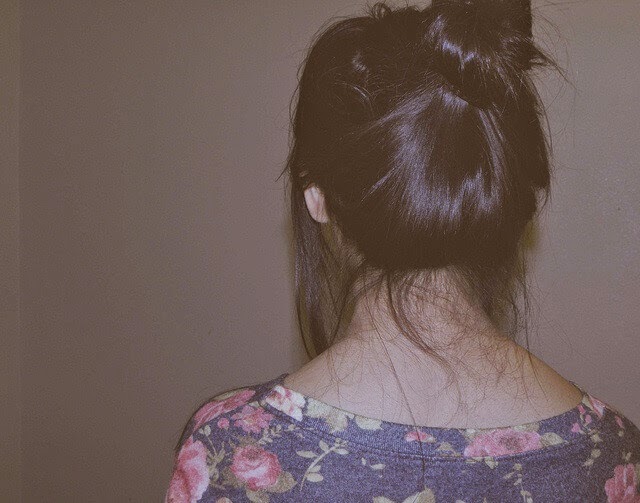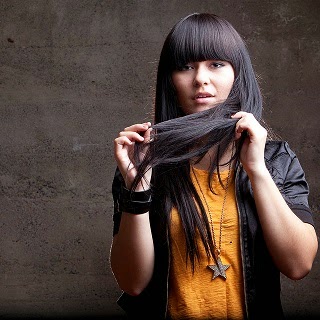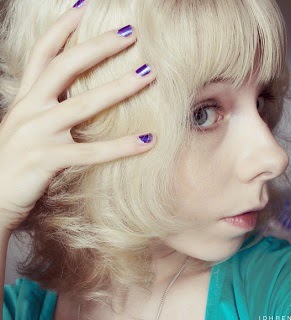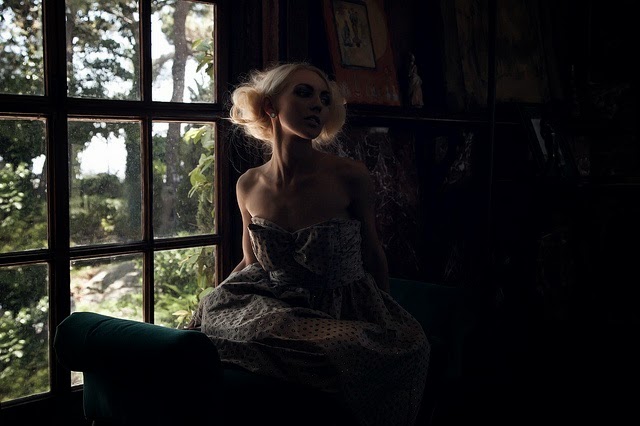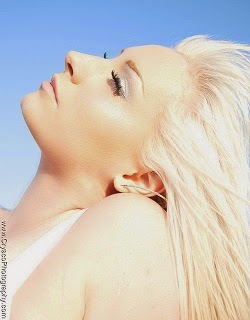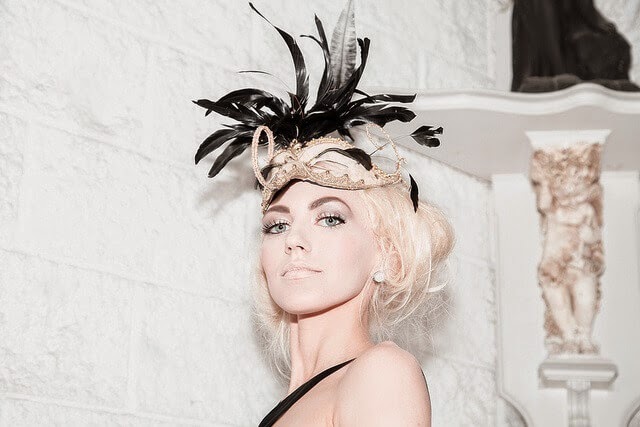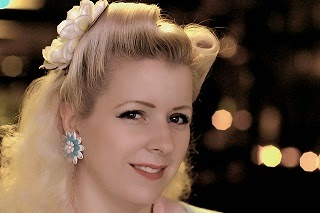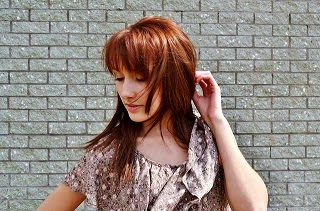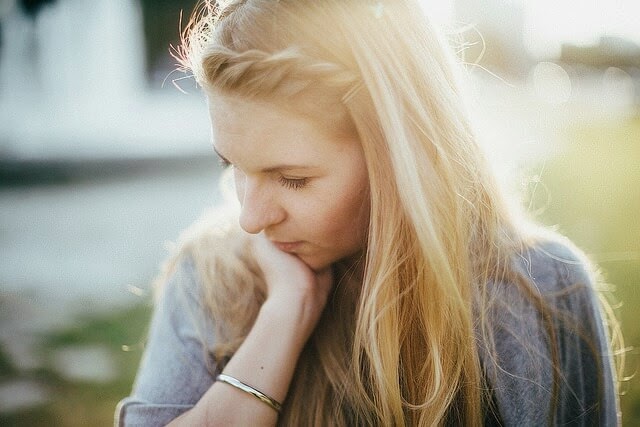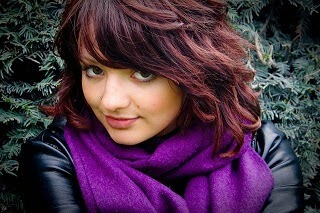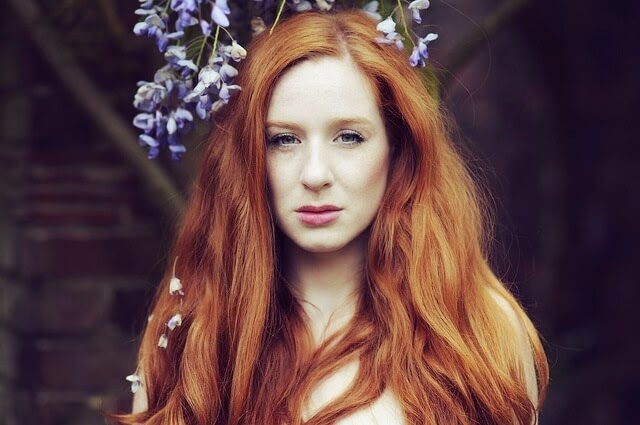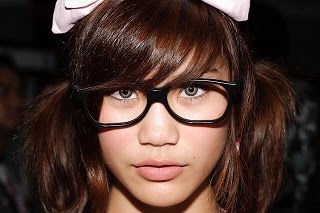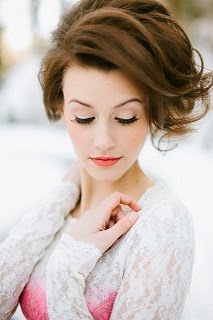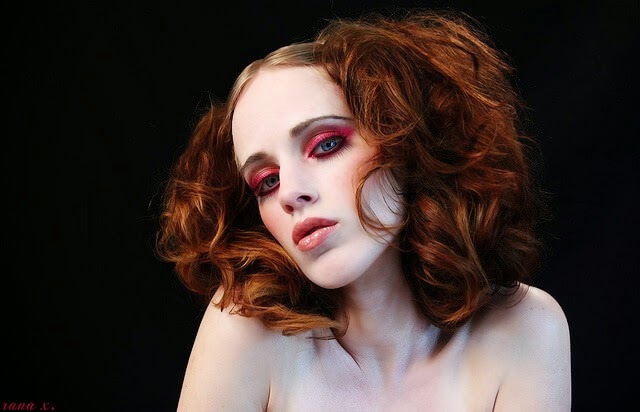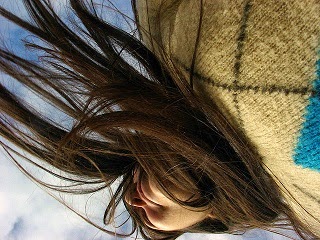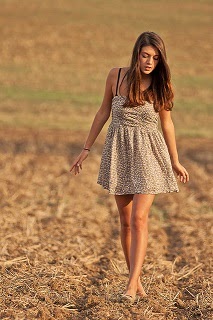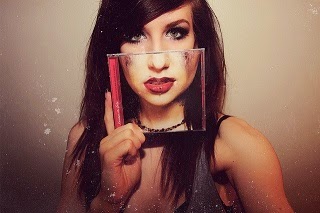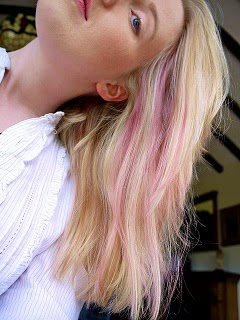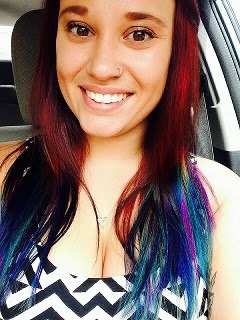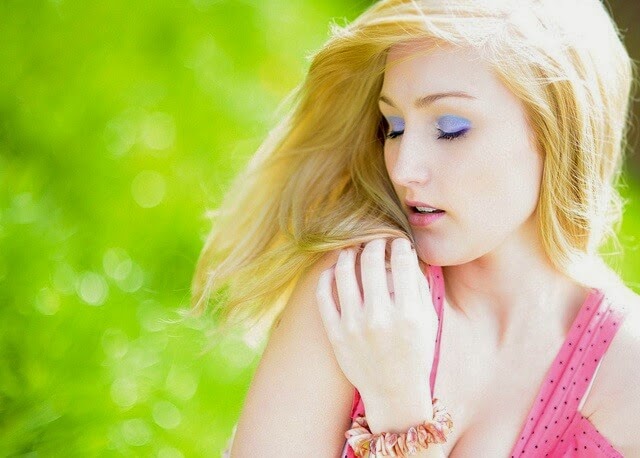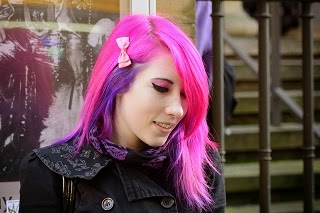 A mahogany brown hair color suits many people because it is a vibrant blend of red and violet tone that has elements of both cool and warm hair color. Even if you have a cooler skin tone and don't normally suit red hair, chances are that you can pull off a mahogany brown color.
A mahogany brown hair color suits many people because it is a vibrant blend of red and violet tone that has elements of both cool and warm hair color. Even if you have a cooler skin tone and don't normally suit red hair, chances are that you can pull off a mahogany brown color.What is mahogany brown hair?
Mahogany shades incorporate rich red tones that are blended with a less dominant violet tone. This gives the shade a similar appearance to mahogany wood, which is itself a deep, rich red color.
As mahogany shades contain violet color, they work well with a cool skin tone, as the violet tone helps to soften the warmth that would otherwise completely clash with your complexion. Essentially, mahogany brown hair is a color that can suit people who wouldn't normally be able to successfully pull off red hair.
The dye process
The dye process for mahogany brown hair depends on whether your hair is already brown or is blonde. A different procedure is required in both cases. If your hair is blonde, you will need to fill it with gold or copper before it can be dyed mahogany. If you already have brown hair though, the process is as simple as applying the right dye.
Dyeing brown hair mahogany
If you have brown hair and have never dyed it before, this means not only can you dye your hair mahogany brown, but you can even lighten it to a lighter shade of brown if desired. If you have previously dyed your hair though, you can't always lighten it further with more dye, but you can still successfully dye it a mahogany brown that is the same depth or darker.
Selecting the right dye
 Your chosen mahogany brown dye should be no lighter than your current brown colour if you've dyed your hair before as a lighter shade won't necessarily work and will produce only a subtle change. In this case, choose a dye that is the same level or darker for best results.
Your chosen mahogany brown dye should be no lighter than your current brown colour if you've dyed your hair before as a lighter shade won't necessarily work and will produce only a subtle change. In this case, choose a dye that is the same level or darker for best results.Shades that are darker than your current color will not only produce a darker mahogany, but also a more vibrant mahogany brown hair color with more intense red and violet tones. For a lighter shade in previously dyed hair, it is best to pre-lighten with bleach first to ensure the color will take properly.
If you want to lighten your hair and it hasn't been dyed in the past, you can achieve this by choosing a lighter shade. If your chosen shade is two levels lighter than your current color, this means you need to lighten your hair two levels in order for the color to take. To do this, you need to use a higher volume of developer in the color to provide the lightening.
To make the process of choosing a mahogany brown hair dye easier, you can use the chart below to quickly select the right dye for your desired results. The desired shade in the left column is achieved with the dye and developer volume listed to the right.
In this sense, you can see that if you want a mahogany brown that is one level lighter than your current color, you would need to use a dye that is one level lighter, and mix that with 20 vol developer to adjust for the lightening that is required to reach the shade.
Darker colors are all mixed with 10 vol as no lightening is required. Tone-on-tone color, where the level of the dye is the same as your own hair, also requires a slightly higher developer strength, as this is necessary to take out enough of your current color for the new color to appear vibrant, even though you're not really going any lighter.
Choosing developer strengths - Find out how to choose the right developer for the amount of lightening or dye results you want...
| Desired shade | Dye and developer to use |
|---|---|
| Same level | Same level dye - 20 vol developer |
| Darker | Darker dye - 10 vol developer |
| 1 shade lighter | 1 shade lighter - 20 vol developer |
| 2 shades lighter | 2 shades lighter - 30 vol developer |
| 3 shades lighter | 3 shades lighter - 40 vol or pre-lighten first |
Note: To use this table, choose the color result you want from the left side of the table. To get that hair color, use the dye in the right side, with the developer listed. As an example, if you wanted a mahogany that is 2 levels lighter than your current brown color, and you are currently dark brown, you would need to use a light mahogany brown dye with 30 vol as the developer to achieve this.
If you have black hair and want a light mahogany brown color; or if your hair is a darker brown and you want a mahogany color that requires 3 or more levels of lightening, it is often more reliable to pre-lighten your hair with bleach first, because there is no guarantee the dye will be able to lighten hair like this to the extent that is required.
It is also more reliable to pre-lighten your hair if it has been previously dyed, as hair dye doesn't effectively remove artificial color. It will often drive your dyed hair lighter by taking out more natural pigment, but this can't always be depended on. If nothing else, use hair dye remover first to try and strip out as much artificial color as possible before dyeing.
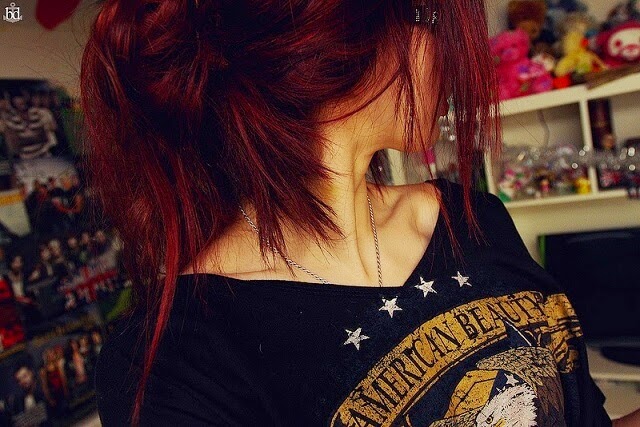
|
| [1] |
Application
For precise results, apply your mahogany brown hair color using a tinting bowl and brush to sectioned hair. This makes the application both easier and quicker. To section your hair out, all you need to do is part it down the middle and then again from each ear. This gives you four roughly equal sections of hair that are much easier to work with.
When you apply the dye, start at the top of one section, working in thin layers. Apply the dye to both sides of each layer and work your way down until you get to the last layer at the bottom of that section. Continue in this way through the other sections and you'll be done in no time.
Once the dye is applied, it will then need to develop. Processing time is often dependent on the amount of lightening required, and the lighter you want the mahogany brown hair color to be, the longer it will usually need to develop.
This development also varies by brand however, and you should use the recommended processing time for the lightening required and brand being used. Some brands will also allow you to use heat during development for a shorter processing time or to force more lift.
Pre-lightening dark or dyed hair
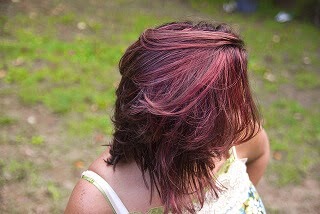
|
| [2] |
As you lighten your hair, the warm base tone is revealed and then a color shift begins to occur. Dark brown or black hair will first start to turn a rusty red color, which then turns a brighter red before beginning to shift to more of an orange color.
You can use the color of your hair to determine when to remove the bleach and then apply the dye, as the lightened color of your base tone can be used to give an approximation of the level.
| Desired level | Bleach hair to: |
|---|---|
| Dark mahogany brown | Red |
| Medium mahogany brown | Orange-red |
| Light mahogany brown | Orange |
To use the chart above, choose the mahogany brown hair color you are aiming for from the left column, then bleach your hair to the color listed in the right column before applying your mahogany brown dye.
How to bleach your hair - Need more help mixing, applying, and lightening your hair with bleach? Find out how to use it before you continue...
Filling blonde hair
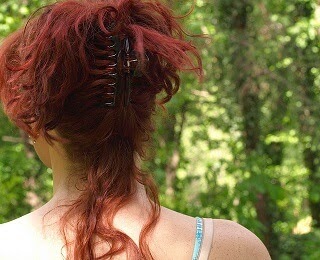
|
| [3] |
Often, a mahogany brown hair color will turn out bright but lack the richness it is meant to have, and will fade quickly. Other times, especially in very light blonde hair, the violet tone becomes dominant and you will end up with bright purple hair instead of a true mahogany color.
The easiest way to get around this is to fill your hair first. To do this, simply add the missing base tone back in for the color you want to achieve. You can use the table in the previous section to determine which color is needed.
Filling can be achieved using either a protein filler or a demi-permanent dye. If in doubt about what product to use to fill your hair before dyeing it mahogany, leave a comment for more information that fits your own hair goals.

|
| [4] |
Hair color maintenance
Hair dye fades, regardless of whether it is permanent or temporary. While a temporary color will generally completely wash out over time though, a permanent mahogany dye will simply fade until it becomes a duller red-brown color. This is largely unavoidable, but there are things you can do to keep your hair color for longer. The use of color refresher shampoos and semi-permanent dyes for toning is one of the best ways to combat fading.
How to decrease fading - Discover more ways to slow down fading in your new mahogany brown hair color, from your shampoo to retouching.
More information:
- The different shades of red hair - Discover the many types of red hair color available...
- Hair coloring tips - Find out how to achieve better hair color results at home, from choice of color to application...
- Shades of brown hair - Discover the many different types of brown hair color available...
Have a question about mahogany brown hair color or need more help achieving this color on your own hair? Leave a comment for tailored advice...
